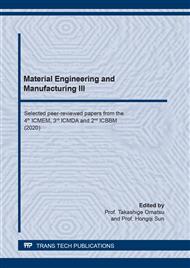p.83
p.89
p.95
p.101
p.107
p.117
p.123
p.129
p.137
A Feasibility Study on Metallurgical Slag Classification by Microstructure Recognition
Abstract:
Property of metallurgical slag generated in smelting or refining process of ferrous production can be determined by its microstructure which depends on chemical composition and production process. This study proposes a deep learning method which is a subfield of artificial intelligence for autonomous slag classification by microstructure recognition. This present work focus on the implementation of a convolutional neural network (CNN) to classify four types of slags that the variance microstructure resulted from the difference of their formation condition. Both secondary electron (SE) and backscattered electron (BSE) image type captured by scanning electron microscope (SEM) are used as dataset. ResNet50, InceptionV3 and DenseNet201 network architectures are selected in this study to evaluate their classification performance. In addition, data augmentation manipulated by the software is randomly flipped both horizontally and vertically to avoid overfitting from a limited number of training images. The results showed that the best approach to classification accuracy is reached 98.89% by CNN. Therefore, it can be concluded that CNN is excellent potential method for autonomous slag microstructure classification systems.
Info:
Periodical:
Pages:
107-113
Citation:
Online since:
August 2020
Price:
Сopyright:
© 2020 Trans Tech Publications Ltd. All Rights Reserved
Share:
Citation:


